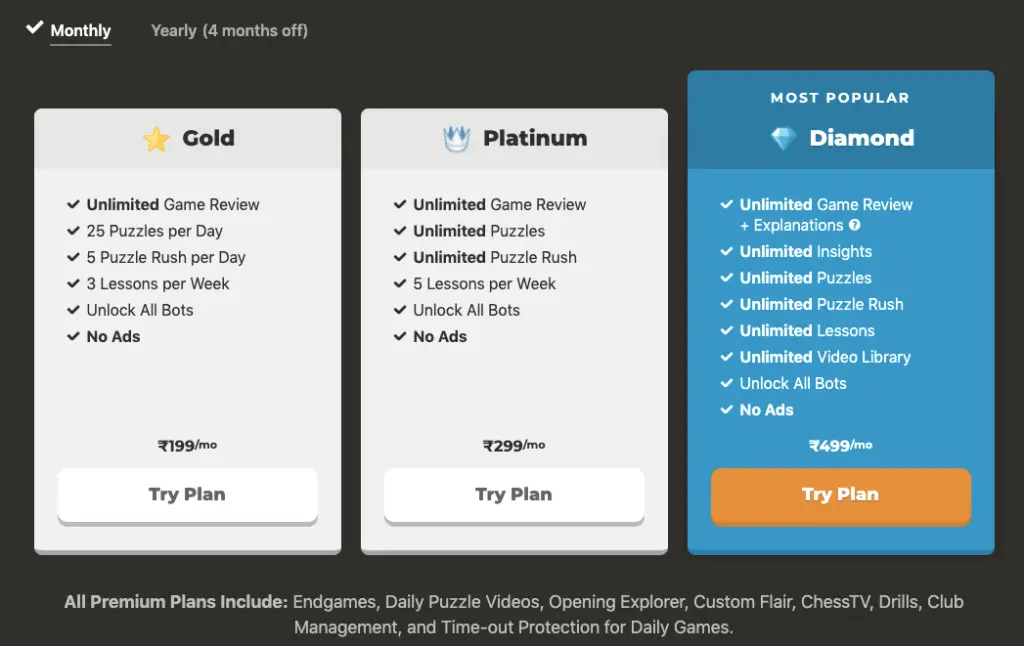Chess.com has insane website usage and app download metrics.
According to Similar Web, Chess.com has a global rank of 238 and got 135 million visits in June 2021 at a bounce rate as low as 17.7%, with people visiting 7.7 pages per visit at an average visit duration of 16.37 minutes.
Chess.com’s android app has 10 million plus installs. It is impossible to know the iPhone app install numbers because Apple does not publicly disclose them, but Chess.com is arguably the top chess app among Apple loyalists.
When I analyzed Chess.com’s web competition, I discovered that its main competitor lags way behind it. The closest competitor on the web, lichess.org, got 80.9 million visits in June 2022.
In the app world, Chess.com has competitors with more downloads than it, but Chess.com still features as one of the top apps for downloads.
On an overall level, considering web and app usage statistics together, Chess.com is the world’s leading hub fur playing Chess.
In the piece, I will run you through how Chess.com became the leading offering in the world of Chess, how Chess.com makes money, and the lessons you and I can learn from this case study.
Chess.com Founding & Growth Story
The surprising part of chess.com’s success is that it was originally started as a website that sold chess boards and other chess-related items. The idea for building a chess site for people to play and turning it into a community of chess lovers came later.
In fact, the founders of chess.com, Erik Allebest (CEO) & Jay Severson, bought the domain name chess.com for $55,000 from a failed startup that aimed to sell chess tutoring software.
The price the founders paid for the domain might seem excessive, but the decision also doubled up as a growth hack. At that time, if people wrote Chess in the browser bar in internet explorer or Firefox, it would add .com and take people directly to chess.com. There was no search at the time, which led to loads of people coming to chess.com.
Chess.com even added a community element to the website to differentiate itself from other chess portals. They turned Chess.com into a social media network where people could not only play Chess but also talk about it. Later, they also added a membership component that charged people in exchange for interactive chess lessons.
In the new few years, Chess.com expanded to become an all-in-one chess destination. In October 2013, they acquired a news site called chessvibes.com, which provided coverage for chess tournaments. More than one billion live games had been played on Chess.com by 2014.
In 2020, Chess.com also acquired the rights to broadcast the World Chess Championship 2021. Chess.com has seen massive growth in recent years due to the rise of chess streaming on platforms like Twitch and YouTube.
Queen’s Gambit, a Netflix show that revolved around Chess and became extremely popular among the masses after its launch in late 2020, also helped increase interest in the game of Chess, nudging more people towards Chess.com.
Today, Chess.com is more than a chess-playing website and app. People can also solve chess puzzles, learn Chess from mentors, watch chess tournaments, read chess news, interact with chess lovers, and buy chess equipment.
Chess.com Business Model
Chess.com primarily makes money by employing a freemium model, wherein users can play Chess using basic features for free but need to pay for an ad-free experience and access to premium features. Additionally, Chess.com also makes money from selling chess boards, chess sets, and more on its chess shop, as well as selling chess merchandise.
Here are the three membership plans Chess.com offers currently:

Depending on the plan users choose, they can access features like game reviews, daily puzzles, video library, etc.
In an interview with Mixergy in Aug 2021, Erik Allebest, co-founder and CEO of Chess.com, while not revealing exact revenue numbers, shared that Chess.com’s yearly revenue stood between $50 million and $100 million.
Before sharing Chess.com’s revenue range, Erik added that revenue is, “It’s twice as much as last year. And it twice it’s that year was twice as much as the year before. And that year was twice as much as the year before.”
Lessons from the success of Chess.com
- Simple ideas are underrated: Many of us gravitate toward complex ideas when it comes to business ideas. In fact, we discard many ideas because they are too simple to be a potentially viable business. The success of Chess.com stands out as an exception to this type of thinking.
- Execution determines success or failure: While building a chess portal was not the deal breaker, Chess.com differentiated itself by becoming a place where people could do much more than play chess.
- It takes more than a decade to build anything valuable: Even though chess.com was started in 2005, it took more than 15 years to get to revenue of $50 million.

